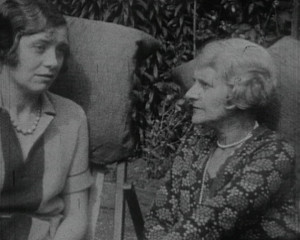
"Amateur filmmaker, cinema historian and railway engineer H.A.V. Bulleid creates a brooding atmosphere in this tale of young love turned sour. When Jack and Daphne seal their love on Lovers' Lane, they promise to meet there every month to commemorate their marriage. Despite starting out as the happiest couple in the world, Jack soon becomes distant and when he is increasingly called away on business, Daphne suspects he may be getting tired of her. And when Jack begins seeing someone else, he asks Daphne for a divorce, with tragic consequences" (EAFA Database).
Amateur news film about the outbreak of the Manchurian Incident in 1931. "Jikyokubin consisted of a set of eight news films, including titles such “Jihen hassei chokugo no Hōten” (Mukden right after the Incident), “Aikokugō o mukau!” (Welcoming patriotic aircrafts!), and “Manshūkoku no kensetsu o iwau” (Celebrating the establishment of Manchukuo). Six out of the eight films were made by Imai, and the rest were shot by two other members of the small-gauge film society at Manchuria Medical College." - Noriko Morisue, "Filming the Everyday: History, Theory, and Aesthetics of Amateur Cinema in Interwar and Wartime Japan" (Yale University: PhD Dissertation, 2020): 188.
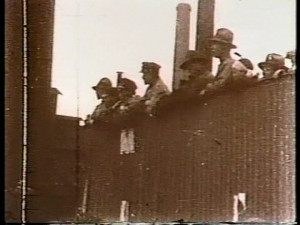
"Prokino recorded the May Day every year from 1927 to 1932. Among these films, this work is the only one that has survived. However, only its first part has survived. The original film depicts the march to the Ueno Park where the rally was dismissed."
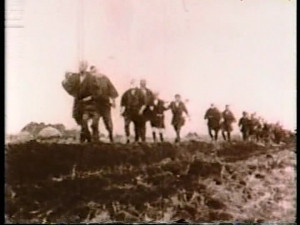
"The main agenda of the prewar farmer's movement was struggle against landowners. Prokino also considered this as their prime concern. The main title sequence and the latter part of the film have unfortunately been lost. While we cannot see its entire structure, we can still get a glimpse of it from this surviving short."
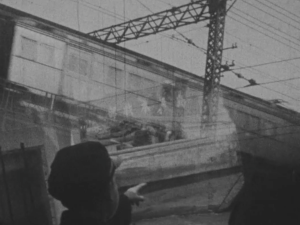
A film in the style of the city symphony.
"In the late 1931 through early 1932, a heated debate developed among several amateur filmmakers in the Kansai region over the question of inserting portions of existing films in an amateur film production. The debate emerged when a 9.5mm amateur production, Otsukai, was disqualified from an amateur film competition sponsored by a Kansai-based newspaper company, Osaka Mainichi Shimbun (Daimai), after the film had once been selected as one of the winners of the contest. As a representative of Daimai, Kitao Ryōnosuke, who was not only a journalist but also a small-gauge filmmaker himself, explained that the film was excluded from the competition because the author, Takeuchi Kichinosuke, did not notify Daimai in advance about the insertion of a portion of an existing work. According to Kitao, even though the use of existing films would not be considered a form of plagiarism, Otsukai violated the competition guideline, which declared that a submitted film “must be one’s own creation.... Takeuchi, after providing the details of how and why he employed part of a film by one of his friends named Tanaka Yoshitsugu, raised a question concerning how to interpret the idea of “one’s own creation.” Drawing upon Soviet filmmaker Vsevolod Pudovkin’s montage theory, Takeuchi insisted that “one’s own creation” in filmmaking stemmed most fundamentally from montage editing, rather than from other formal or stylistic components including shooting with a camera.” - Noriko Morisue, "Filming the Everyday: History, Theory, and Aesthetics of Amateur Cinema in Interwar and Wartime Japan" (Yale University: PhD Dissertation, 2020): 65-66.
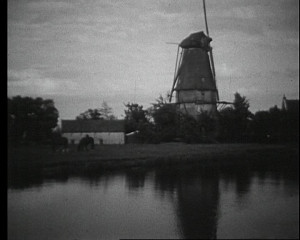
"A four reel film recording details of a motor tour undertaken by Eustace and Eunice Alliott through six of the twelve Dutch provinces" (EAFA Database).
"Mr Alliott responded by projecting yet another film, in colour, recording a visit to Holland, in which there were some excellent shots of Dutch scenery, including the gorgeous tulip fields. There were also many happy portraits of peasants and children in their quaint national costume." (Anon, Photographic Journal, 418)
[Information included on the EAFA database suggests that the film was partially shot using prismatic film which, when using red, blue and green filters on a Kodak A projector, a colour experience is possible. This includes the scenes of: Volendam, Marken, Alkmaar (lively cheeses), Sneek, Veere, Domburg etc.]
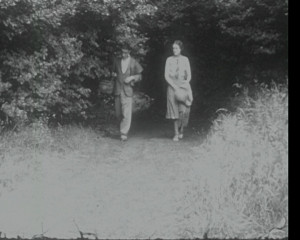
"After alighting at Langport East railway station and following a long walk, a young man and his fiance check into the Anchor Inn at Little Langport, noted for its fishing. The man's fixation with angling, his fiance's slow mastery of the technique and the romantic threat of an attractive, ace woman angler are the obstacles in their relationship. Humorous intertitles typify the era's social manners" (EAFA Database).
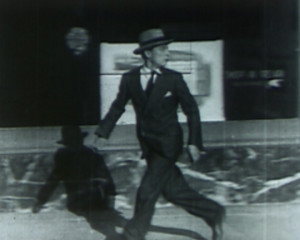
"Amateur filmmaker, cinema historian and railway engineer H.A.V. Bulleid mixes slapstick and romance in this portrait of the extra-curricular life of a Cambridge student. When our intrepid undergraduate first arrives in Cambridge, he forgets the name of his college and loses his ticket, leaving him struggling to reach his lodgings. After a dream-filled night spent sleeping on the streets, he arrives at a lodging where everything costs that little bit extra. Rarely in college, he spends his days stealing bicycles and chasing women until he finds one he wishes to marry. With the courtship in full swing, her father says they can only marry if the undergraduate earns £20 in a single day; an ultimatum with inflammatory consequences" (EAFA Database).
Total Pages: 299